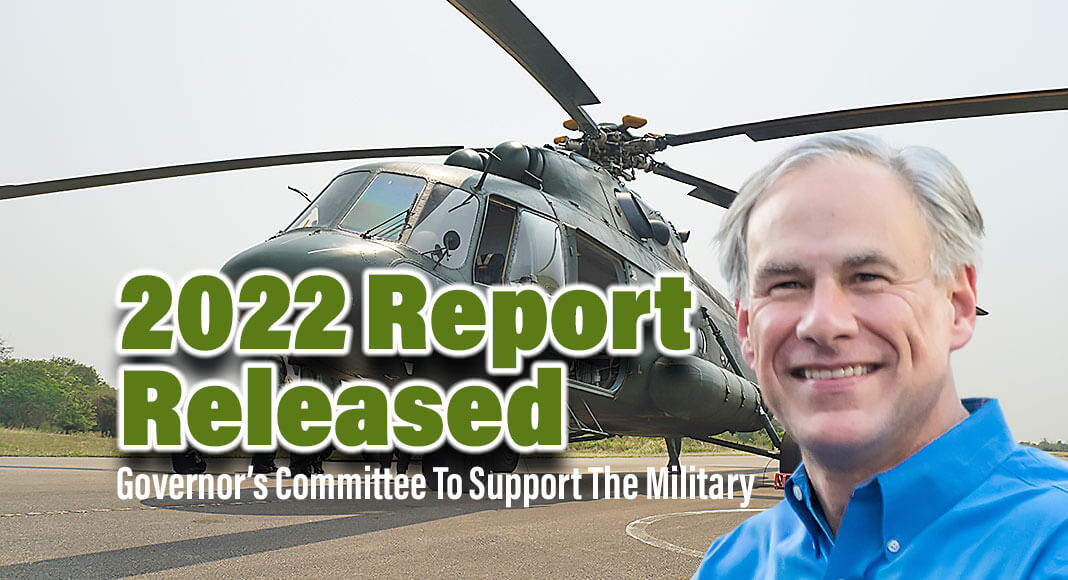
Texas Border Business
AUSTIN, Texas – The Governor’s Committee to Support the Military released their 2022 report with recommendations for policy changes and legislative action to improve education, health care, quality of life, workforce development, encroachment, and infrastructure as they relate to the military community of Texas.
“Texas is the proud home to 15 military installations and the U.S. Army Futures Command,” said Governor Greg Abbott. “With over $114.2 billion in economic output, these U.S. military installations represent one of the state’s largest industries, supporting more than 622,790 direct and indirect jobs in communities across this great state. I am grateful for the Committee’s hard work in developing meaningful recommendations that will further enhance the military value of these installations and improve the quality of life for our military families. With the guidance from this Committee, we will continue working together this Legislative Session to achieve these important goals.”
The Committee’s recommendations include:
- Mitigate the Impact of Lost Property Tax Revenue Due to the Disabled Veterans Residence Homestead Exemption: Explore options to mitigate the negative resource impact on communities and take action to ensure Texas military installations and the surrounding communities remain competitive for future mission and stationing decisions, as well as any future Base Realignment and Closure (BRAC) actions.
- Early Enrollment for Military Family Students: Modify the current Texas Code to change “10 days” to “90 days” to provide school districts proof of residence. This accounts for the long lead time to find housing and allows military family students to remain stable in school.
- Military Child Education Coalition: Continue to ensure funding is appropriated by the Legislature to the Texas Education Agency (TEA) budget for the current $500,000 biennium funding for the Military Child Education Coalition in the TEA’s base appropriation request.
- Defense Manpower Data Center (DMDC): Continue to pursue the memorandum of agreement between TEA and DMDC for data and establishment of a reporting process for annual or semi-annual reporting that allows TEA to measure the military readiness component of College, Career, and Military Readiness outcomes.
- Increase Integration between Texas Educational Providers and Military Installation/Industry Skill Requirements: Develop legislation to encourage Texas high schools, technical and community colleges, and universities to invest in programs supporting the growing demands in Texas for advanced manufacturing and technology skills.
- Addition of Airfield Paving or Related Texas Department of Transportation (TxDOT) Services to Interagency Contracts between TxDOT and the U.S. Military: Modify Texas Code to allow TxDOT to perform any TxDOT service on military installations, including airfield pavement projects to include runways, taxiways, and aircraft parking areas or related TxDOT services if the installation pays for the work.
- Defense Economic Adjustment Assistance Grant (DEAAG) Program: Fully fund the DEAAG program to $30 million to help enhance military installations in Texas while improving and protecting those installations and surrounding communities from potential negative impacts of any future BRAC or stationing decision.
- Encroachment on Military Training: Ensure potential legislation considers encroachment effects on military installations and includes provisions to protect the military installations.
Read more on the recommendations in the full report.
The Governor’s Committee to Support the Military was established in September 2018. The Committee is comprised of up to 22 individuals, including Texas-resident veterans, community leaders, and business leaders.














